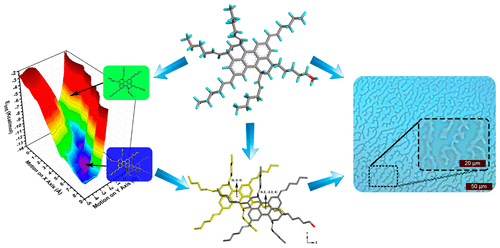当前位置:
X-MOL 学术
›
Energy Fuels
›
论文详情
Our official English website, www.x-mol.net, welcomes your
feedback! (Note: you will need to create a separate account there.)
Resin from Liaohe Heavy Oil: Molecular Structure, Aggregation Behavior, and Effect on Oil Viscosity
Energy & Fuels ( IF 5.2 ) Pub Date : 2017-12-29 00:00:00 , DOI: 10.1021/acs.energyfuels.7b03279 Tao Li 1 , Jun Xu 1 , Run Zou 1 , Hao Feng 1 , Li Li 1 , Junyou Wang 1 , Martien A. Cohen Stuart 1 , Xuhong Guo 1, 2
Energy & Fuels ( IF 5.2 ) Pub Date : 2017-12-29 00:00:00 , DOI: 10.1021/acs.energyfuels.7b03279 Tao Li 1 , Jun Xu 1 , Run Zou 1 , Hao Feng 1 , Li Li 1 , Junyou Wang 1 , Martien A. Cohen Stuart 1 , Xuhong Guo 1, 2
Affiliation

|
Resin accounts for over 30% of the composition of Liaohe heavy crude oil and can result in severe difficulties in oil recovery and transportation. To determine the structure of the resin extracted from Liaohe heavy oil, matrix-assisted laser desorption ionization time-of-flight mass spectrometry, elemental analysis, Fourier-transform IR spectroscopy, and NMR spectroscopy were employed to determine the chemical structure of the resin. The results showed that the resin molecule is composed of anthracene, two cycloalkanes, and six alkyl chains grafted on the cyclic-structure core. UV–visible spectroscopy, turbidity measurements, dynamic light scattering, optical microscopy, and scanning electron microscopy were used to observe the resin aggregation behavior upon addition of a poor solvent. The effect of the resin on the rheology of model oils was investigated systematically. The π–π interactions among resin molecules impose a critical impact on the assembly of the resins. The quantum mechanics calculations revealed that there are two low-well depths of interaction energy when two resin molecules approach, which implies that the bending and branching structure of the resin aggregates may originate from the staggered stacking of the resin molecules. These findings can improve our understanding of the resin aggregation behavior and thus enlighten the solution to the flowing problem during recovery and transportation of heavy oil with a high resin content.
中文翻译:

辽河稠油树脂:分子结构,聚集行为及其对油粘度的影响
树脂占辽河重质原油成分的30%以上,可能会给采油和运输造成严重困难。为了确定从辽河重油中提取的树脂的结构,采用基质辅助激光解吸电离飞行时间质谱,元素分析,傅里叶变换红外光谱和核磁共振光谱确定树脂的化学结构。结果表明,该树脂分子由蒽,两个环烷烃和六个接枝在环状结构核上的烷基链组成。使用紫外可见光谱,浊度测量,动态光散射,光学显微镜和扫描电子显微镜观察添加不良溶剂后的树脂聚集行为。系统地研究了树脂对模型油流变性的影响。树脂分子之间的π-π相互作用对树脂的组装产生了至关重要的影响。量子力学计算表明,当两个树脂分子接近时,相互作用能有两个低阱深度,这表明树脂聚集体的弯曲和支化结构可能源自于树脂分子的错位堆积。这些发现可以增进我们对树脂聚集行为的理解,从而有助于解决在回收和运输具有高树脂含量的重油过程中出现的流动问题。量子力学计算表明,当两个树脂分子接近时,相互作用能有两个低阱深度,这表明树脂聚集体的弯曲和支化结构可能源自于树脂分子的错位堆积。这些发现可以增进我们对树脂聚集行为的理解,从而有助于解决在回收和运输具有高树脂含量的重油过程中出现的流动问题。量子力学计算表明,当两个树脂分子接近时,相互作用能有两个低阱深度,这表明树脂聚集体的弯曲和支化结构可能源自于树脂分子的错位堆积。这些发现可以增进我们对树脂聚集行为的理解,从而有助于解决在回收和运输具有高树脂含量的重油过程中出现的流动问题。
更新日期:2017-12-29
中文翻译:

辽河稠油树脂:分子结构,聚集行为及其对油粘度的影响
树脂占辽河重质原油成分的30%以上,可能会给采油和运输造成严重困难。为了确定从辽河重油中提取的树脂的结构,采用基质辅助激光解吸电离飞行时间质谱,元素分析,傅里叶变换红外光谱和核磁共振光谱确定树脂的化学结构。结果表明,该树脂分子由蒽,两个环烷烃和六个接枝在环状结构核上的烷基链组成。使用紫外可见光谱,浊度测量,动态光散射,光学显微镜和扫描电子显微镜观察添加不良溶剂后的树脂聚集行为。系统地研究了树脂对模型油流变性的影响。树脂分子之间的π-π相互作用对树脂的组装产生了至关重要的影响。量子力学计算表明,当两个树脂分子接近时,相互作用能有两个低阱深度,这表明树脂聚集体的弯曲和支化结构可能源自于树脂分子的错位堆积。这些发现可以增进我们对树脂聚集行为的理解,从而有助于解决在回收和运输具有高树脂含量的重油过程中出现的流动问题。量子力学计算表明,当两个树脂分子接近时,相互作用能有两个低阱深度,这表明树脂聚集体的弯曲和支化结构可能源自于树脂分子的错位堆积。这些发现可以增进我们对树脂聚集行为的理解,从而有助于解决在回收和运输具有高树脂含量的重油过程中出现的流动问题。量子力学计算表明,当两个树脂分子接近时,相互作用能有两个低阱深度,这表明树脂聚集体的弯曲和支化结构可能源自于树脂分子的错位堆积。这些发现可以增进我们对树脂聚集行为的理解,从而有助于解决在回收和运输具有高树脂含量的重油过程中出现的流动问题。


















































 京公网安备 11010802027423号
京公网安备 11010802027423号